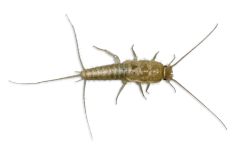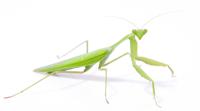
Description:
Capable of thriving in most climates, silverfish prefer to dwell in dark, damp areas such as basements, attics, kitchens and bathrooms. They are especially attracted to paper and damp clothing. Commonly found in stored boxes in garages and sheds.
Appearance:
Silverfish can be grey, brown or silver colors with scales and are wingless. They measure 12-25 mm in length, and can be characterized by their three tail-like appendages that extend out from the abdomen. They have a flattened body and eyes that are small or absent and 6 legs. They move very fast and in a fish like motion which is responsible for their common name.
Lifecycle:
The type of development displayed by a Silverfish is called Incomplete Metamorphosis and always consists of the egg, nymph and adult stage. The life of a silverfish begins when the nymph hatches from the egg. A Silverfish nymph looks just like an adult Silverfish does, just smaller. The nymphs spend between 3 to 24 months growing before they reach the adult stage. Once they are sexually mature adults, there are elaborate courtship rituals which lead to the fertilization of one to several eggs. Fertilization is indirect because the female will collect a sperm package that a male has left behind. A female may lay numerous batches of eggs over a period of a few weeks. The eggs are white, oval shaped, tiny and are laid in cracks or crevices to protect them. The life span of an adult Silverfish is then typically 2-3 years.
Habits:
Silverfish are known for their destructive feeding habits, oftentimes ruining papers, clothing and wallpaper. They commonly infest dark, damp areas around paper and linen sources. Silverfish infestations can be found in kitchens, laundry rooms, bathrooms, attics and basements. Silverfish can survive in almost any environment, but they prefer areas with high humidity. Nymphs develop faster in areas that are humid. Therefore, one of the best ways to prevent an infestation is to control humidity. In crawl spaces, open vents and in basements, use baseboards with caulking. Silverfish consume a variety of foods, and stringent housekeeping practices may help prevent an infestation by limiting potential feeding sites.






